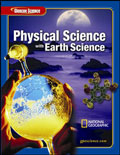1 A) carbonates B) sulfates C) oxides D) silicates 2 A) silica B) limestone C) pepper D) salt 3 A) cleavage B) color C) luster D) silicates 4 A) Gypsum B) Fluorite C) Talc D) Apatite 5 A) naturally occurring B) definite crystalline structure C) definite chemical composition D) organically formed 6 A) granite B) rhyolite C) basalt D) gabbro 7 A) the rock in intrusive B) The rock formed at two different stages, both intrusively and extrusively. C) The rock is extrusive D) The rock is not volcanic. 8 A) erosion B) release of gas C) intrusive formation D) weak chemical bonds 9 A) iron and silica B) silica and aluminum C) magnesium and iron D) oxygen and aluminum 10 A) olivine and pyroxene B) olivine and sodium-rich plagioclase C) calcium-rich plagioclase and olivine D) plagioclase and quartz 11 A) cementation of sand B) evaporation C) compaction of clasts D) condensation 12 A) mineral composition B) grain size C) rock classification D) quartz 13 A) compaction and evaporation B) compaction and cementation C) evaporation and cementation D) cementation and porosity 14 A) gravel B) silt C) sand D) clay 15 A) sandstone B) siltstone C) basalt D) limestone 16 A) changes in temperature and pressure B) changes in temperature and water content C) changes in pressure and chemical composition D) changes in chemical composition and color 17 A) change in color B) mineral grain alignment C) change in chemical composition D) fracturing 18 A) shale, slate, phyllite, schist, and gneiss B) shale, slate, schist, gneiss, and phyllite C) clay, garnet, biotite, and mica D) slate, shale, phyllite, and gneiss 19 A) limestone to quartzite B) limestone to marble C) quartzite to marble D) sandstone to limestone 20 A) The carbon cycle B) Bowen's Reaction Cycle C) Mohs Scale D) The rock cycle.





